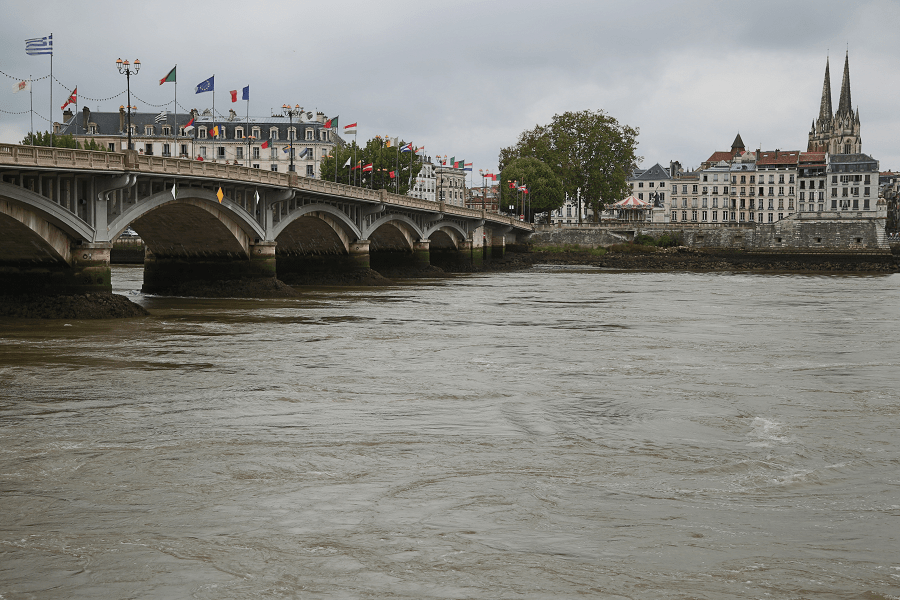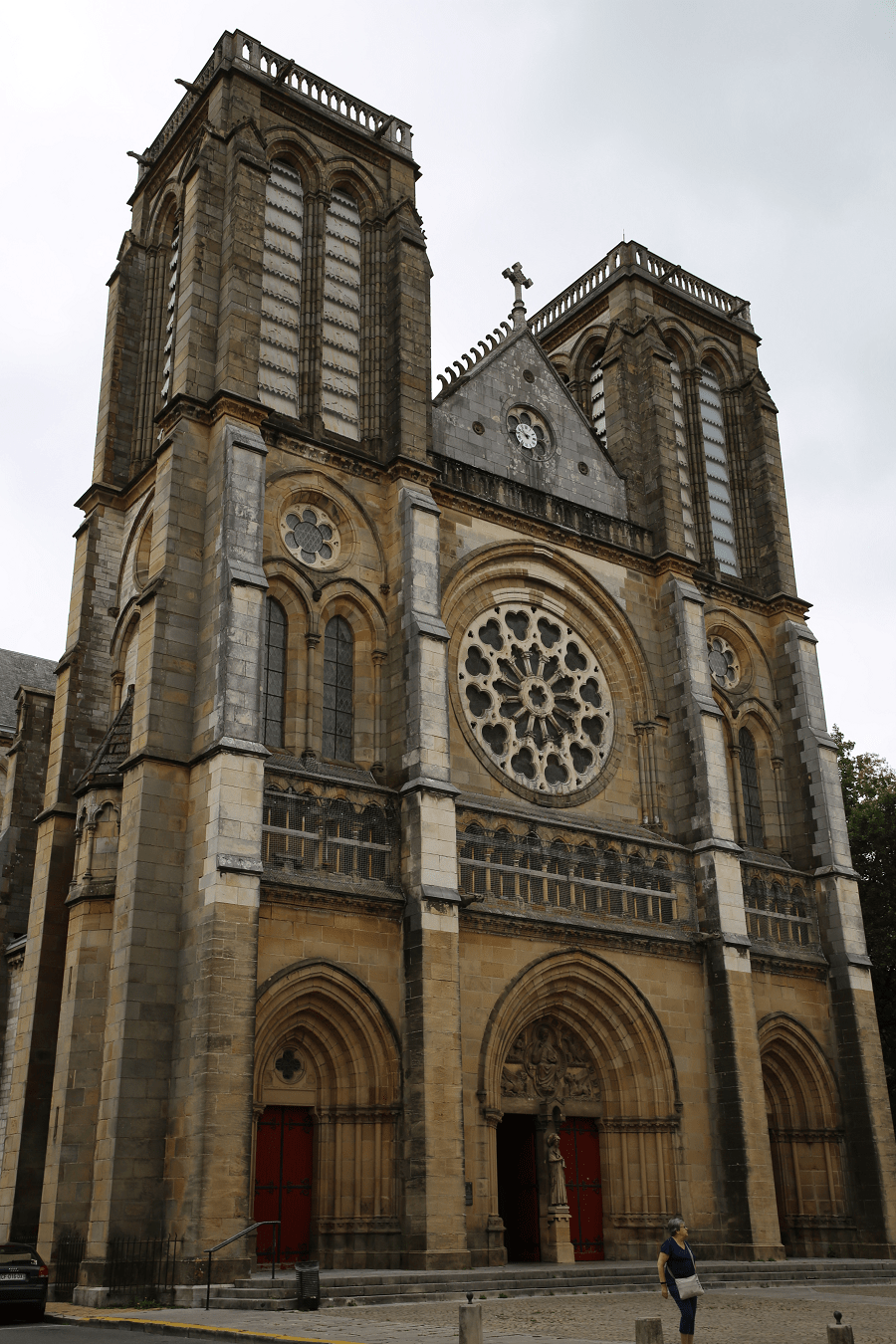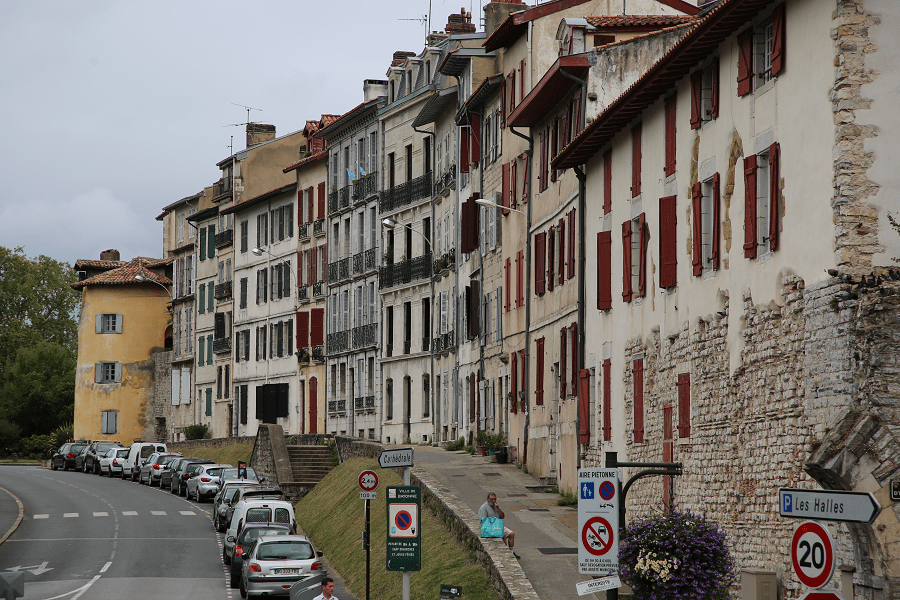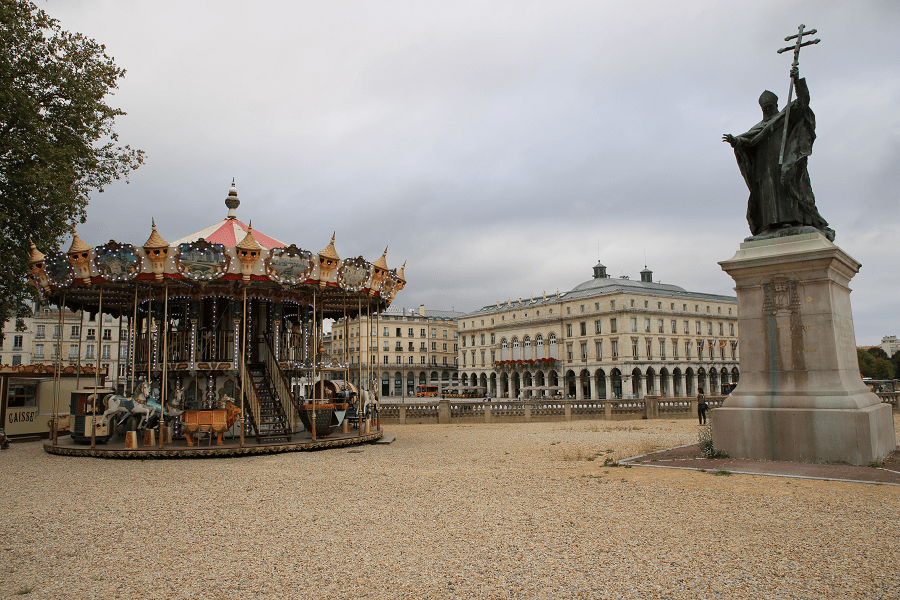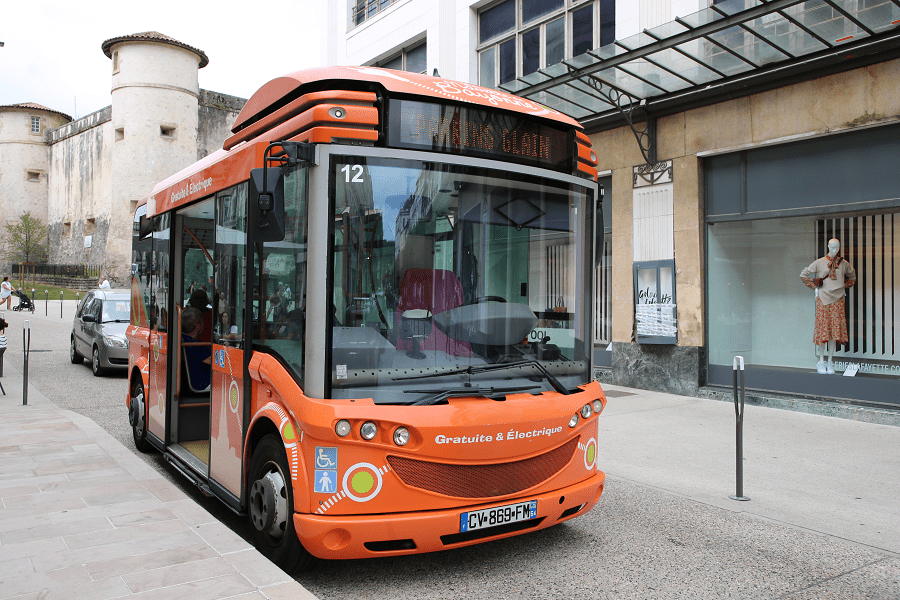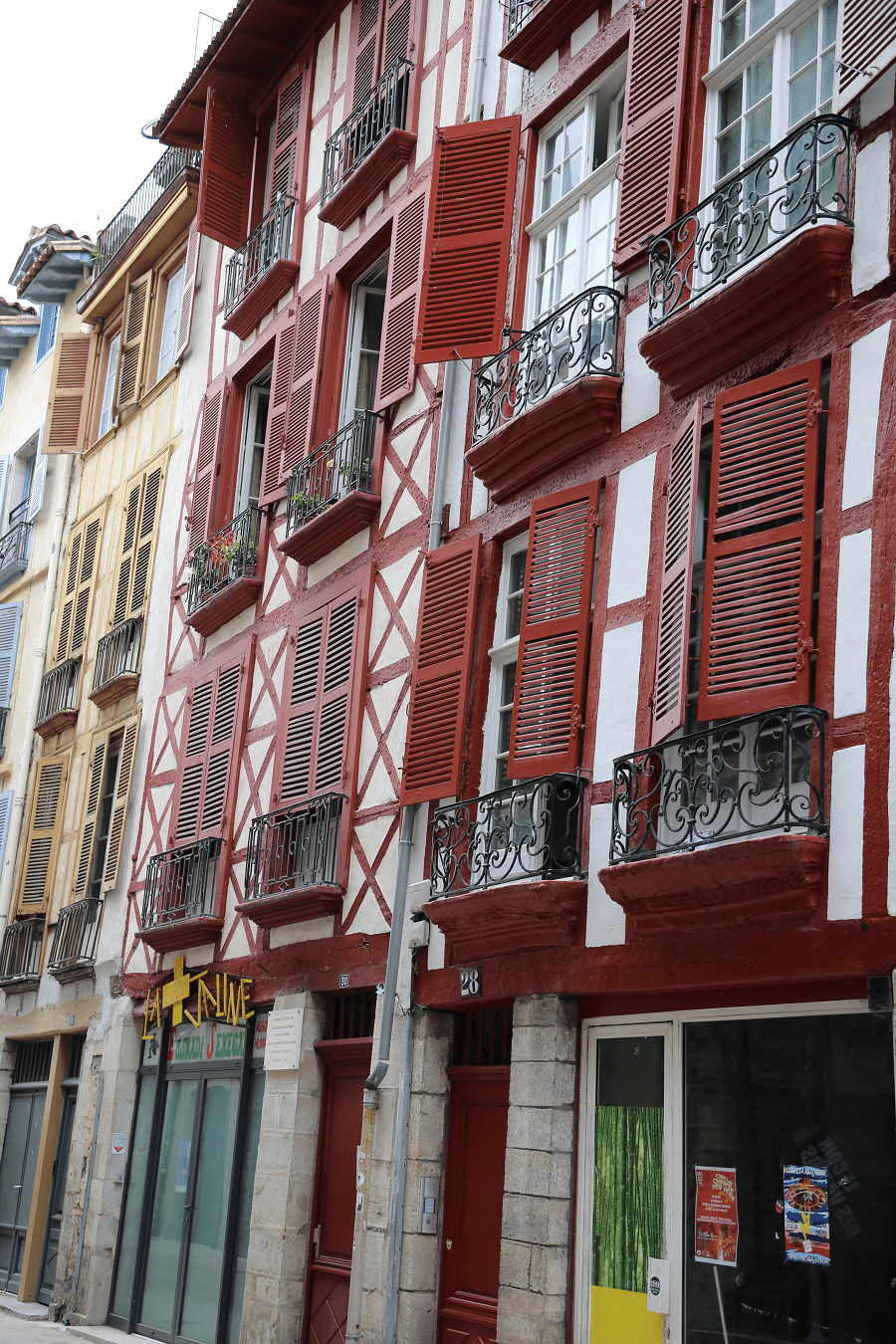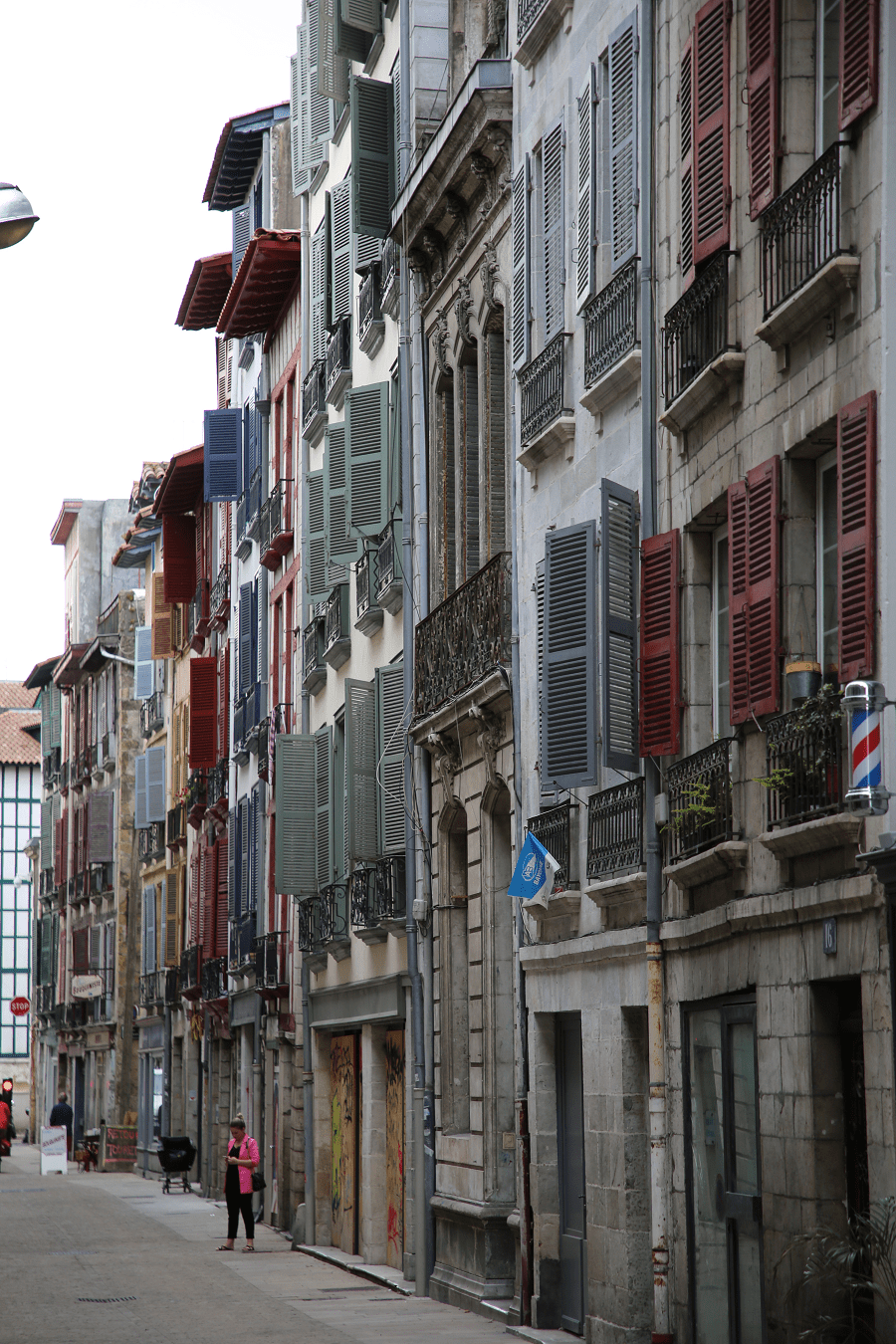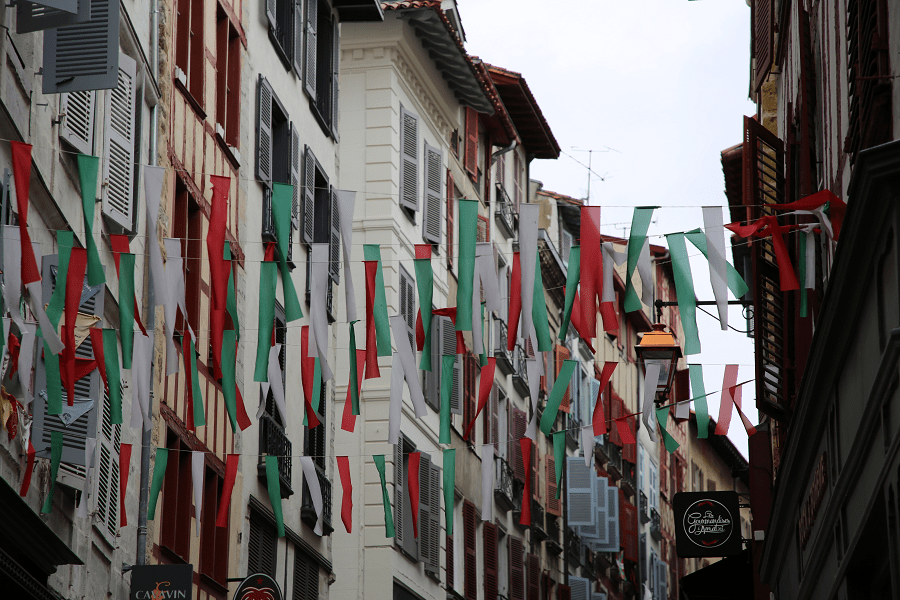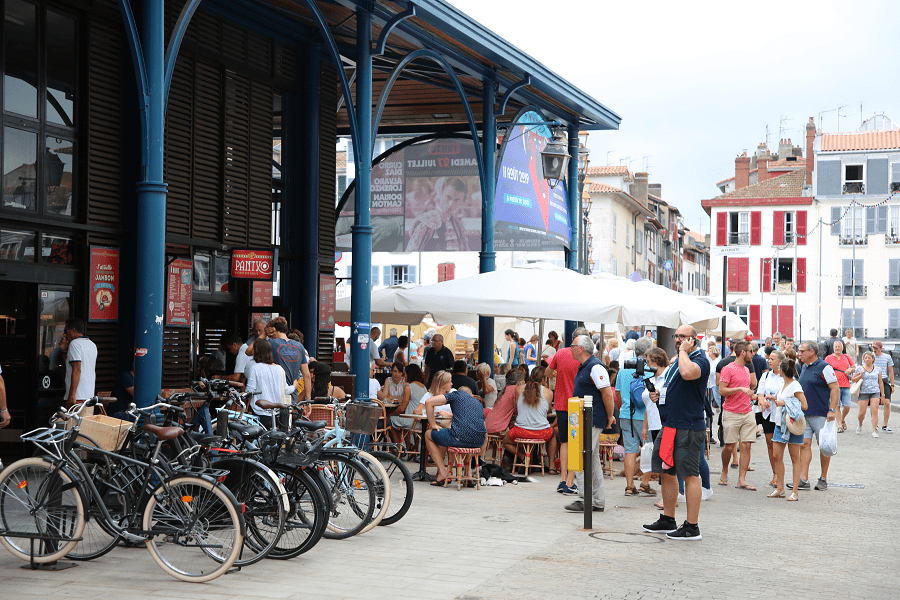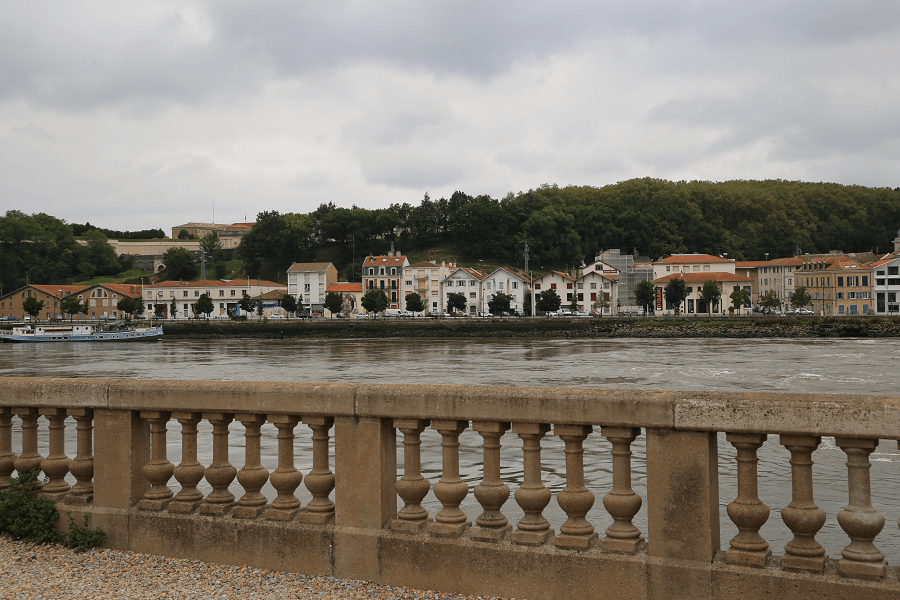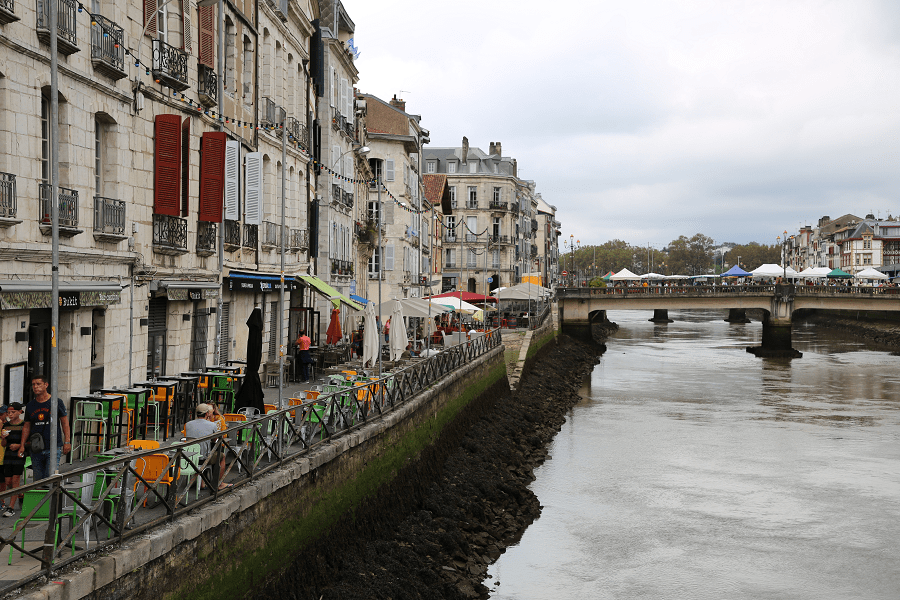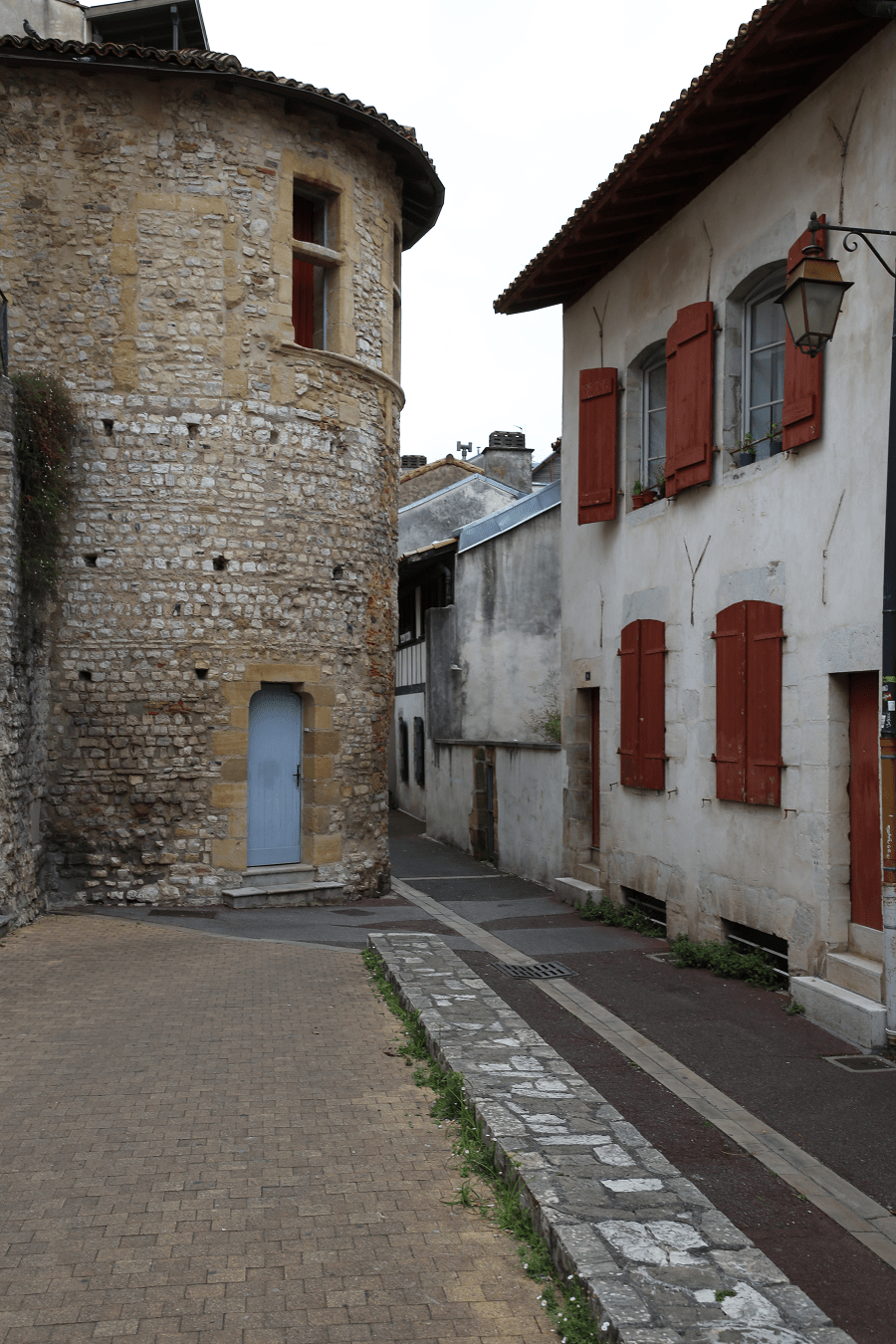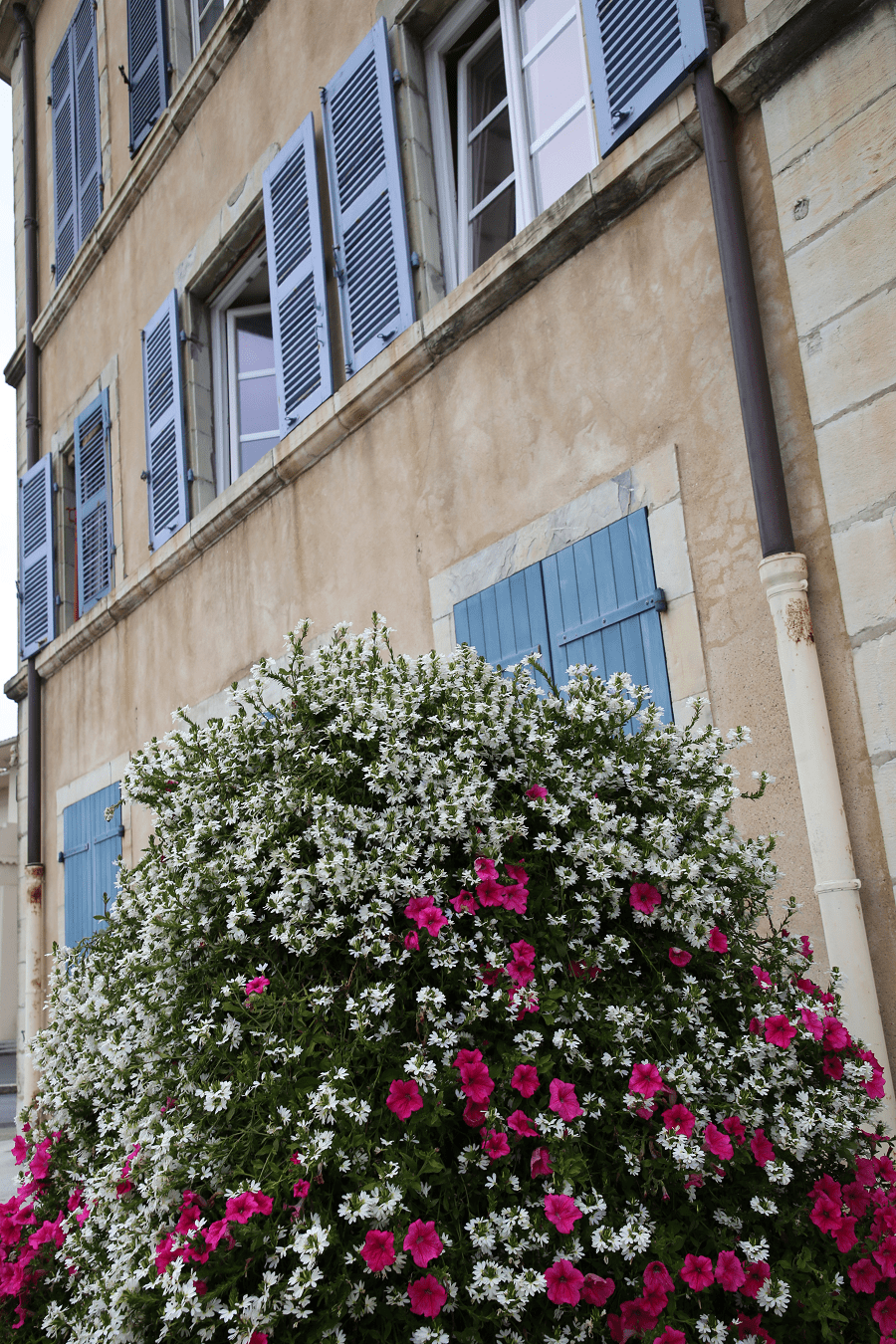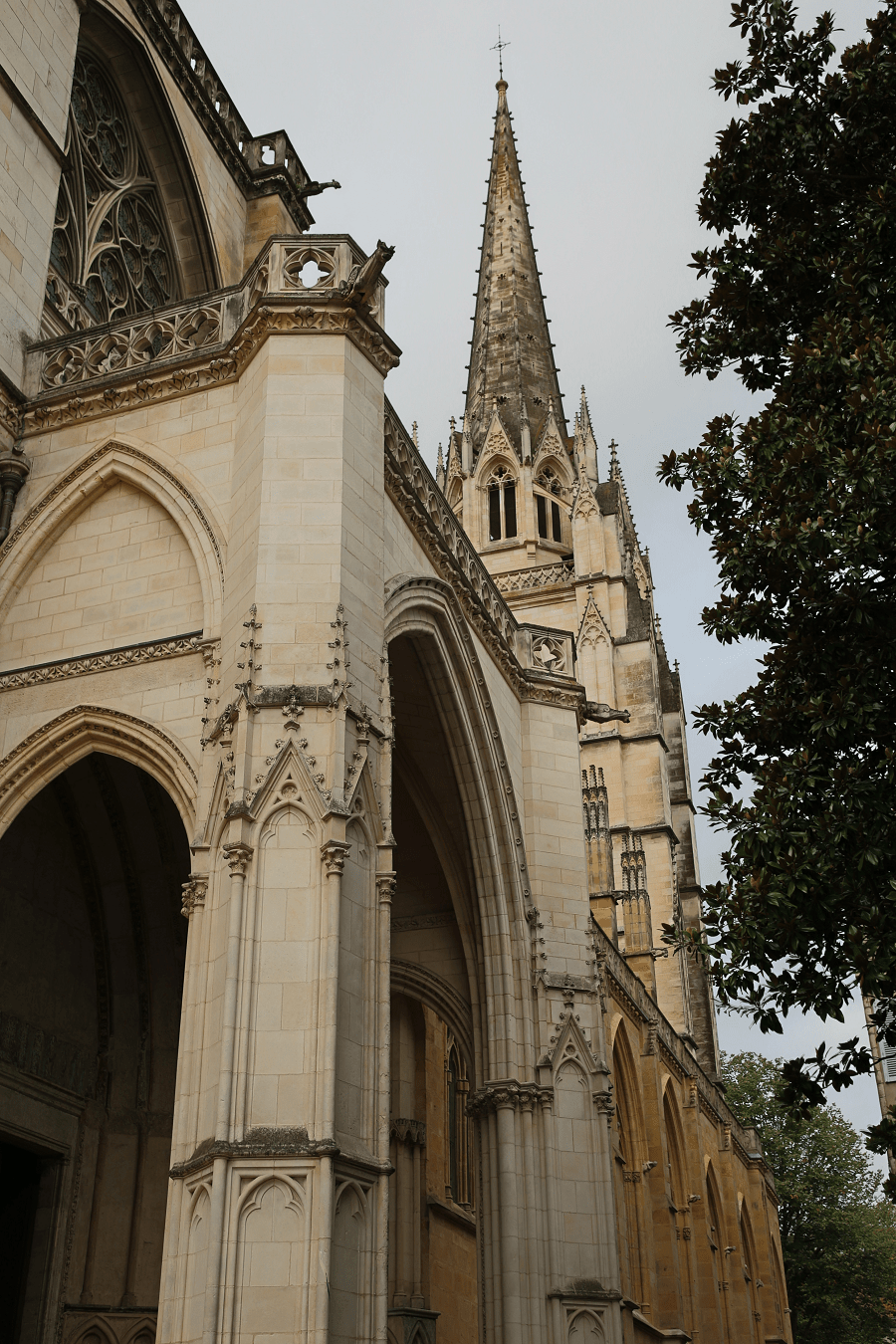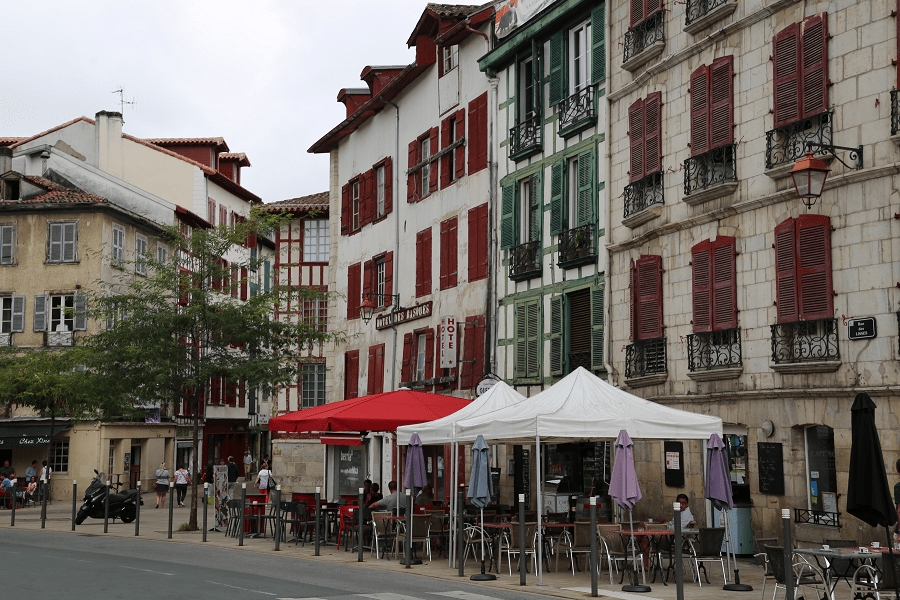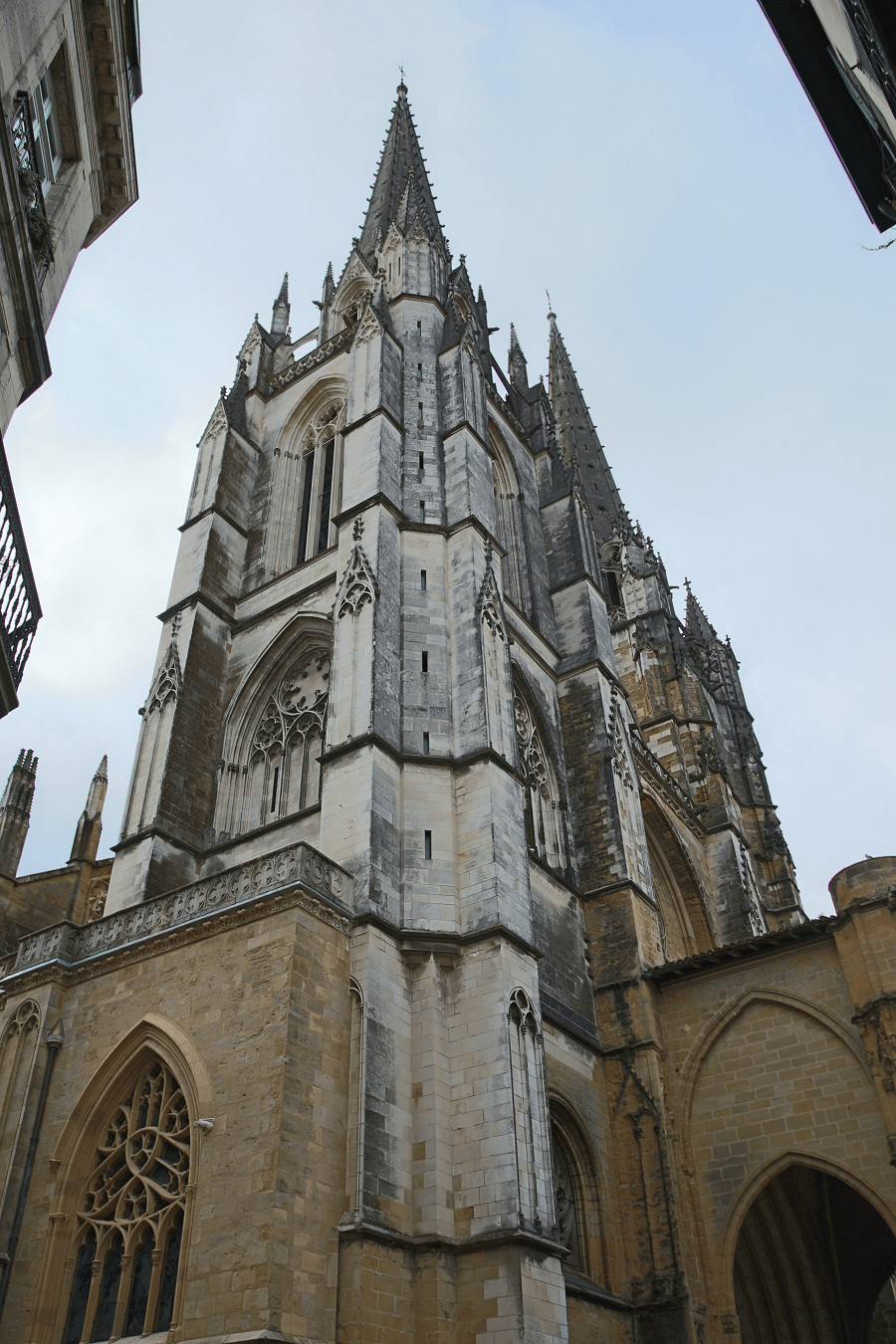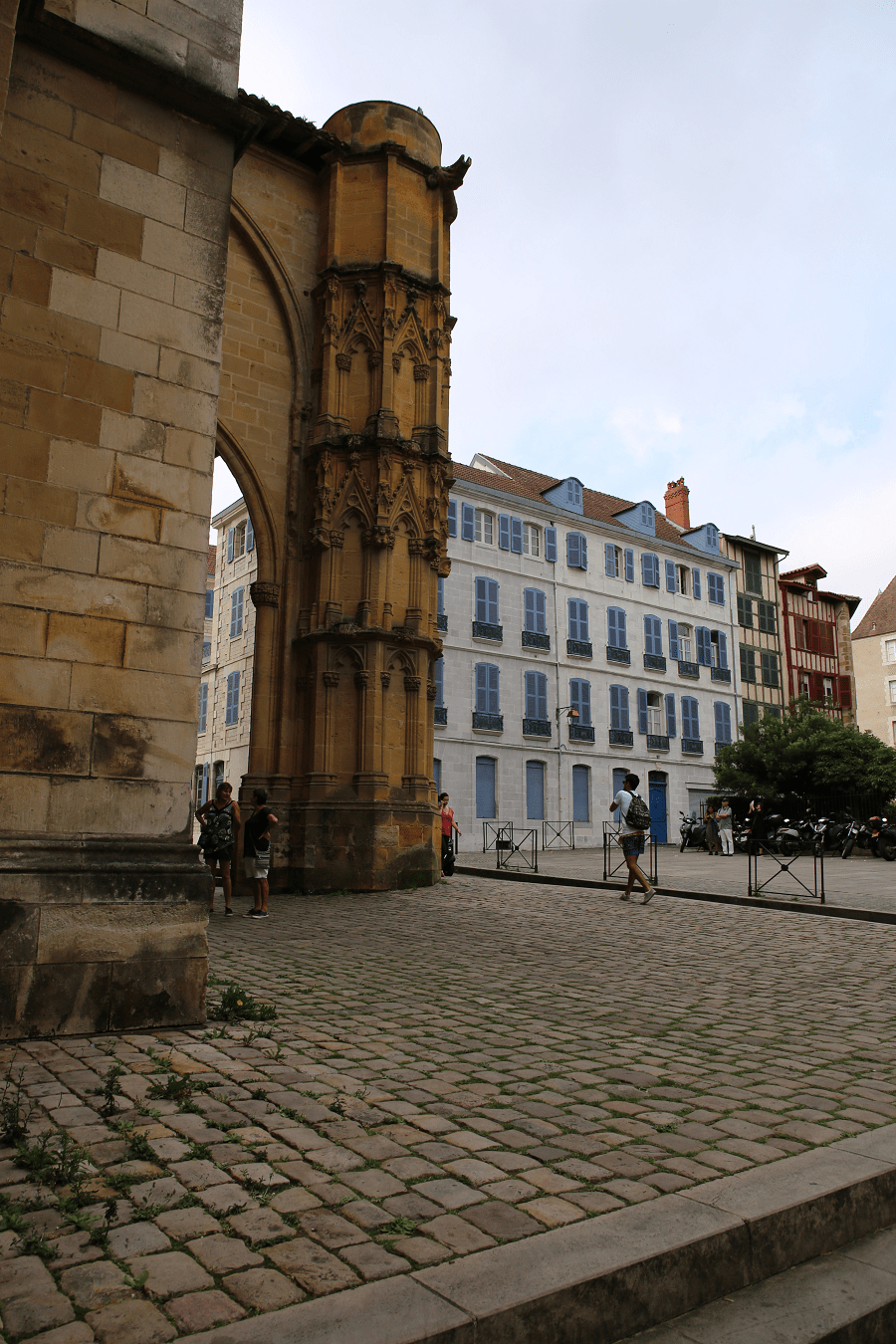Bayonne (fr. Bayonne) is a city in the Atlantic Pyrenees (Pyrénées-Atlantiques), in the south-west of France. The city location is between the Atlantic Ocean and the Pyrenees massive foothills, at the confluence the Niv (la Nive) and Adur (l’Adour) rivers. The city has over 50,000 inhabitants, making it the second-largest city in the Pau department.
The city is a major regional center; it combines the Anglet and Biarritz cities, the largest cities in the south of Aquitaine. Bayonne is located on the border between the Basque Country and Gascony, just a few dozen kilometers from Spain.
Bayonne is a city of art with a rich cultural heritage and gastronomic traditions. People know it best for its ham and chocolate.
It’s located on the border between Gascony and the Basque Country; these two cultures have always influenced Bayonne, they complement and not oppose each other. The city location ensured its prosperity and gave it the status of a leading commercial center over the centuries. The city is still a major educational and economic, which houses the ninth largest port in France.
The city consists of three main areas: Grand Bayonne, Petit Bayonne and Saint-Esprit, each of which has its own personality, which is reflected in the architecture and the “mood”, which significantly differs sometimes.
Bayonne is partly located on the outskirts of the Silver Coast (a long stretch of the straight line with a sandy coastline stretching for almost 250 kilometers; the nearest beaches are only ten kilometers from the city center (in the suburban towns of Biarritz and Anglet). This is a favorite place for surfers who come here to “ride the waves.” The Bayonne landscapes are very diverse: there are green hills, emerald pastures, forests, swamps, and the first foothills of the Pyrenees, of course, with a very modest height: 905 meters in La Rhune and 543 meters in Jaizkibel.
The Chiberta Forest (la forêt de Chiberta) is not far from Bayonne, which is called the “green lungs” of the region – it grows pines, stone and cork oaks. It adjoins the vast Landes de Gascogne forest.
History
Bayonne’s story begins in ancient times. They discovered the Neanderthal settlements’ traces of belonging to the Middle Paleolithic here.
The small city grew rapidly in size in subsequent centuries, covering an area of 8 to 10 hectares. They established an episcopacy around 830 here, which defended its power over the surrounding area.
Vikings attacked the city brutally in 892; they robbed and burned it. King of Navarre Sanche III the Great (le Roi de Navarre Sanche III le Grand) created the Viscount Labour (la vicomté du Labor) title in 1023. The Viscount Labour dynasty began with Loup Sanche, who made Bayonne his capital. He and his heirs sought to modernize the city, strengthen its defense and began the castle construction, which we know as the Old Castle (le Château-Vieux) today.
The city began to grow even more intensively in the twelfth century. “Bork Nau” (Borc Nau or Bourg-Neuf in the Gascon style) – the current area of Small Bayonne – was built in the swamps on the opposite bank of the Nive river (la Nive). They built houses stilts, and it was possible to get to them on a tilholle (tilholle, a boat used for transportation). Saint-Esprit-du-bout-du-Pont, which formed on the other side of the Adour River, soon joined the new district. La Piachotte: An Example of Medieval Urban Planning.
The following events had significant consequences for the city and its environs: the Duchess of Eleanor of Aquitaine divorced the king of France, Louis VII in 1152, and remarried the future king of England, Henry II Plantagenet (Henri Plantagenêt). When he ascended the throne of England in 1154, all of Aquitaine came under the influence of England. Bayonne Port began the active export of wine and other goods to the British Isles.
The king endowed his continental possessions with great autonomy in tax matters. However, several years later, local barons led by Viscount Bayonne Arnaud Bertrand had a conflict with the son of Eleanor of Aquitaine and Henry II Plantagenet – Richard the Lionheart. He took Bayonne from the Viscounts of Labour, and the power passed into the mayor’s hands.
A new crisis erupted when King of Castile Alfonso VIII (Alphonse VIII de Castille) besieged the city in 1206.
A terrible fire ravaged the city in 1258. The city cathedral suffered. However, they raised funds soon and rebuilt the magnificent building, influenced by the Gothic of Champagne, almost uncharacteristic of these southern lands.
Bayonne remained faithful to the English crown throughout the Hundred Years War.
France defeated the Anglo-Aquitanian armies and regained its former possessions in 1451. The king of France erected a new fortress in the area of Petit Bayonne – le Château-Neuf.
Nature played a cruel joke with the city – the bed of the capricious Adur river changed direction, which greatly complicated access to the port and led to a drop in trade. Engineer Louis de Foix erected dams and “fixed” the mouth of the river only in 1575. Prosperity has returned to the city.
The sixteenth-century is the century of the settlement of Spanish and Portuguese Jewish refugees who gave France chocolate, bringing its recipe from the New World.
King Louis XIV fortified his kingdom’s borders and made Bayonne an unwinnable fortress in the 17th century.
Sébastien de Vauban, an outstanding military engineer of his time, the Marshal of France, whose built fortresses were declared Mankind World Heritage, was responsible for the city fortifications (its ramparts, bastions, ditches).
The city experienced a new “golden age” related to the cod, whale oil, and wine trade and the grain and wool import in the next century.
The French Revolution separated the Saint-Esprit district from the rest of Bayonne in 1792. The city became part of the Low Pyrenees (Basses-Pyrénées) department, and Saint-Esprit became part of the Landes department.
It was in Bayonne that the Spanish King Charles IV renounced the power in favor of Napoleon, which served as a prelude to a bloody war in 1808.
Wellington’s army besieged the city fortress in 1814. Marshal Soult was defeated and forced to surrender.
Prosperity returned to the city only in the second half of the century with the advent of the railway, which, on the one hand, contributed to the trade development, and on the other hand, turned the Basque coast into a famous resort.
The twentieth century was marked by German occupation. It lasted until August 22nd, 1944. Representatives of the French Republic Provisional Government took possession of the city on August 23rd, and peace was restored.
Bayonne became a university city in connection with the opening of the Pau University branch in 1975.
Bayonne also became the main agglomeration of southern Aquitaine at the beginning of the 21st century.
Tourism, architecture, and main sights
The main city attraction is St. Mary’s Cathedral (Sainte-Marie Cathedral). (Masses take place here from 7 to 9 in the morning every day of the week, and the Sunday mass begins at 11 in the morning). The Cathedral is a World Heritage Site. They built it in the 13th century and rebuilt after a fire. It is in the Gothic style. The cathedral’s impressive size puts it on a par with the northern France greatest cathedrals. The cathedral’s total length is about 80 meters; the arches height is 85 meters (almost like that of Notre Dame in Paris). There are 16th century stained glass windows in the interior, including the “Canaanite Prayer” stained glass window (1531).
The Cathedral stands on the St. Jacob pilgrimage route to Santiago de Compostela.
Big Bayonne is a tourist place where the city architectural traditions are preserved. Roman kastrum, shopping malls and transport channels, old shops with galleries and the promenade fishing section… The oldest Freedom Square in the city still paved with tiles depicting the heraldic symbols of Aquitaine, Gascony, and Labourdain is here also. The main square attractions are the City Hall and the National Theater.
An interesting tourist place is Rue du Port-Neuf (New Bridge Street), which location is on the old canal site: there are curious buildings on stilts with colorful wooden facades of red, chestnut, green and blue colors on former embankment both sides. There are also shops selling chocolate.
An unusual Spanish street (rue d’Espagne) with tall and narrow half-timbered houses with a two windows width and with iron balconies. This is a type of building structure in which vertically mounted poles, which are the supporting structure of the building, serve as the building supporting base. These supporting poles and beams are visible from the outside of the house and give the building a distinctive look.
Little Bayonne is a modern city with new buildings. The Corsair Embankment (Quay des Corsaires) has the most picturesque look. There are many restaurants with local cuisine around. There is the New Castle in Little Bayonne – a 13th-century fortress expanded in the 15th century.
There is the Basque Museum, the Bonnat-Helleu Museum of Art, named after the artist – a native of Bayonne, as well as the Natural Sciences Museum in the same area.
The Saint-Esprit district appeared around the 12th century and named after the Order of the Hospitallers, whose monks arranged one of the transshipment points on the pilgrimage route of St. Jacob.
The eponymous church with Gothic lancet ceilings and stucco moldings is among the quarter attractions.
The quarter central square is the Republic Square.
Here is the city synagogue, as well as the fortress of Marshal Vauban, which is still a secret military facility.
Bayonne Train Station is in the same city part.
An interesting fact: they organized the first Spanish bullfighting in France here on August 21st, 1853, thanks to which Bayonne has the “the oldest bullfighting city in France” status today.
The city, captured by thousands of festivals, vibrates to the tambourines’ sounds during the famous “Bayonne Festival” every year at the very end of July.
Shopping in Bayonne
Shops and souvenir shops are mainly concentrated in the Grand Bayonne.
Bayonne Restaurants
Gourment restaurants: La Table, Auberge Du Cheval Blanc, La Grange, Goxoki
Local restaurants: Le Bistro’Quai, Bistro Toque, Chiloa Gourmets, Au bouchon basque
Reasonably priced restaurants: Restaurant Vovo, El Cartel de Baiona, Restaurant Chez Marco, Janine
How to get there?
By car
The Bayonne location is at the intersection of the A63 motorway and the D1 highway, which connects to the A64 motorway, connecting the Bayonne with Toulouse. You can use the three exits from the A63 motorway – No. 6, No. 5.1, and No. 5 to get to Bayonne.
By train
Bayonne Train Station location is in the Saint-Esprit quarter (located on the Bordeaux-Irun railway line and is the terminal station of the Toulouse-Bayonne line). TGV high-speed trains, Intercités trains (including night trains), as well as regional trains TER Aquitaine, arrive at the station.
By plane
Bayonne is served by the airport of Biarritz-Anglet-Bayonne, which is located in the neighboring Anglet and Biarritz communes.
By bus
There are 11 routes (plus 1-night route) in Bayonne; they connect the city with other communes of the agglomeration.
Distances by car:
From Biarritz: 18 min (8.5 km) via Boulevard du BAB/D260
From Pau (tolls): 1 h 22 min (115 km) via A64
From Dax (tolls): 47 min (54.1 km) via A63
From Nantes (tolls): 4 h 57 min (533 km) via A83, A10 and A63
From Bordeaux (tolls): 2 h 5 min (185 km) via A63
From Toulouse (tolls): 2 h 58 min (298 km) via A64
From Monaco (tolls): 8 h (874 km) via A64
From Nice (tolls): 7 h 52 min (852 km) via A64
From Marseille (tolls): 6 h 23 min (695 km) via A64
From Avignon (tolls): 5 h 43 min (622 km) via A9 and A64
From Perpignan (tolls): 4 h 37 min (499 km) via A61 and A64
From Andorra (tolls): 4 h 49 min (406 km) via A64
Main information
Area: 21.69 sq. km
Coordinates: 43 ° 29′N 1 ° 29′W
Population: 51,945 (2019)
Languages: French, Basque
Currency: Euro
Visa: Schengen
Time: Central European UTC +1



